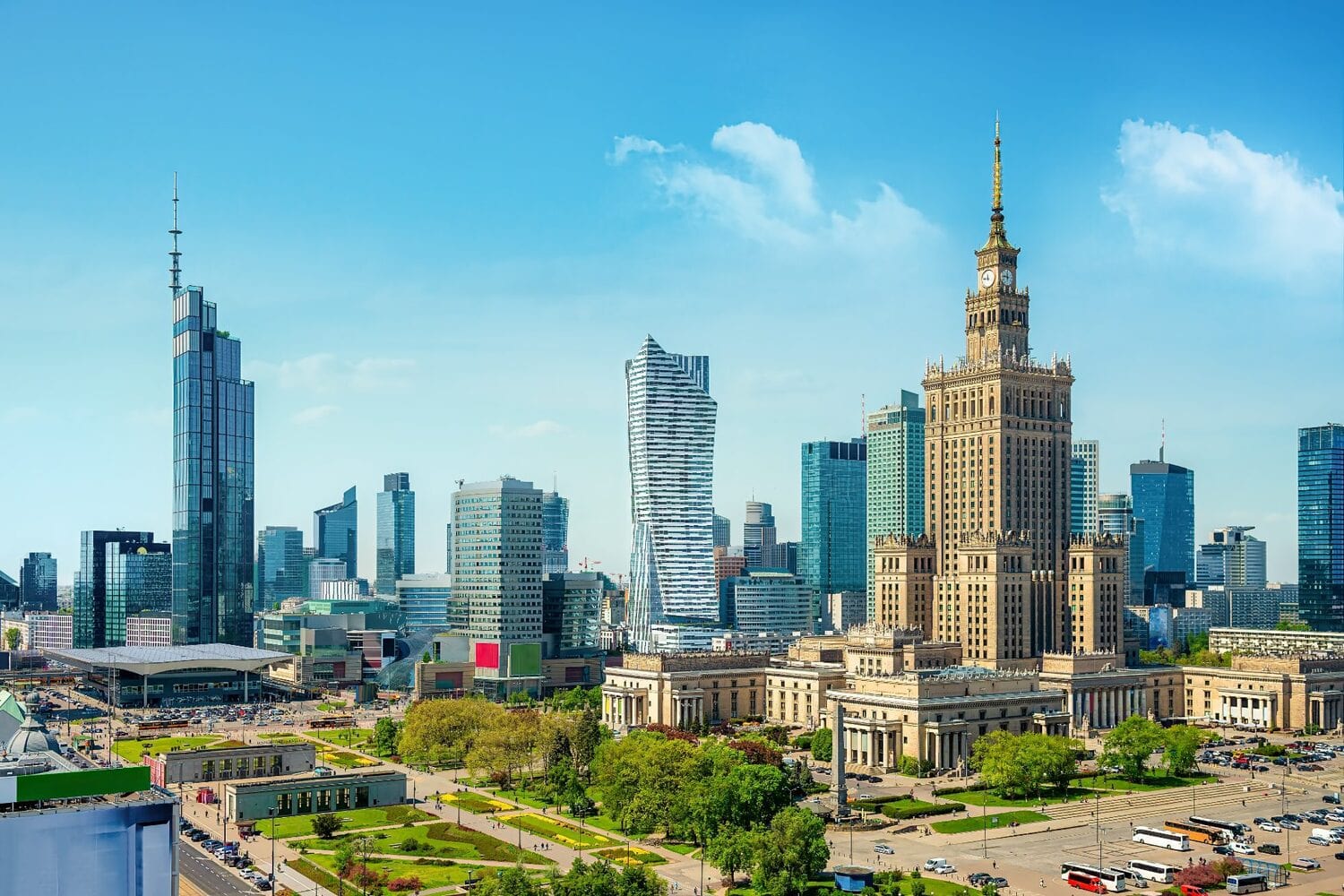Warsaw is a city that combines a dramatic history with modern energy and a rich cultural heritage. Known as the Phoenix City, it has risen from the ruins many times and continues to surprise visitors with its contrasts. From historic landmarks and royal palaces to vibrant urban spaces and innovation centers, Warsaw offers much more than it may seem at first glance. The following fascinating and educational facts about Warsaw will help you discover new sides of this remarkable city.
- Warsaw was almost completely destroyed during World War II, with about 85 percent of the city reduced to rubble. After the war, a large-scale reconstruction was carried out, and many buildings, especially in the Old Town, were rebuilt using original drawings and paintings.
- The Old Town of Warsaw is included in the UNESCO World Heritage List. This recognition was granted not for the original architecture, but for the meticulous and authentic reconstruction of the historical center after its destruction during the war.
- The Palace of Culture and Science is the tallest building in Poland and one of the most controversial. It was a gift from the Soviet Union to Poland in the 1950s, and today it houses theaters, museums, offices, and even a swimming pool.
- Warsaw is the birthplace of Marie Curie, the famous physicist and chemist, and the first woman to win a Nobel Prize. Her childhood home now hosts a museum dedicated to her life and scientific achievements.
- The city has one of the most developed public transportation systems in Central Europe, including buses, trams, and two metro lines. The Warsaw Metro is relatively young, with its first line opened only in 1995.
- One of Warsaw’s symbols is the Mermaid, who is considered the guardian of the city. Statues of the Mermaid can be found in different parts of the city, with the most famous located in the Old Town Square and on the Vistula Riverbank.
- The Royal Castle, once the residence of Polish kings, was completely destroyed during the war and rebuilt in the 1970s and 1980s. Today it serves as a museum and a symbol of national pride and historical memory.
- Warsaw’s Łazienki Park is one of the largest and most beautiful city parks in Europe. It includes palaces, classical pavilions, a lake with swans, and the famous monument to composer Frédéric Chopin, where summer concerts are held.
- During the Warsaw Uprising in 1944, the city experienced one of the most tragic and heroic episodes of its history. Despite heavy losses, this event became a symbol of courage and resistance to oppression.
- Warsaw has an active modern art and music scene. The city hosts numerous festivals, including the Warsaw Autumn for contemporary music and the Orange Warsaw Festival for pop and rock.
- The Vistula River, which divides the city, has become a popular recreational area. The left bank is urban and developed, while the right bank retains a more natural landscape with wild beaches and bike trails.
- Warsaw’s name in Polish, Warszawa, is thought to originate from a fisherman named Wars and his wife Sawa, according to legend. Their love story is one of the founding myths of the city.
- The Warsaw Stock Exchange is the largest in Central and Eastern Europe. Its presence makes the city an important financial center of the region.
- Warsaw’s cuisine combines traditional Polish dishes with modern culinary trends. Here you can try classic pierogi, żurek soup, as well as experimental fine dining in Michelin-recommended restaurants.
- The University of Warsaw is one of the oldest and most prestigious in Poland. It has produced many prominent alumni, including Nobel laureates and political leaders.
- The Museum of the History of Polish Jews, POLIN, is one of the most technologically advanced and powerful museums in Europe. It tells the thousand-year history of Jews in Poland, using interactive exhibits and immersive storytelling.
- Warsaw is home to over 1.8 million people, making it the largest city in Poland. Despite its size, the city manages to preserve a sense of community and local character in its neighborhoods.
These amazing and captivating facts about Warsaw show how diverse and resilient this city is. Its history and modern life are tightly intertwined, creating a unique atmosphere that fascinates both locals and visitors. Learning more about Warsaw allows you to appreciate its beauty, complexity, and spirit of renewal.





